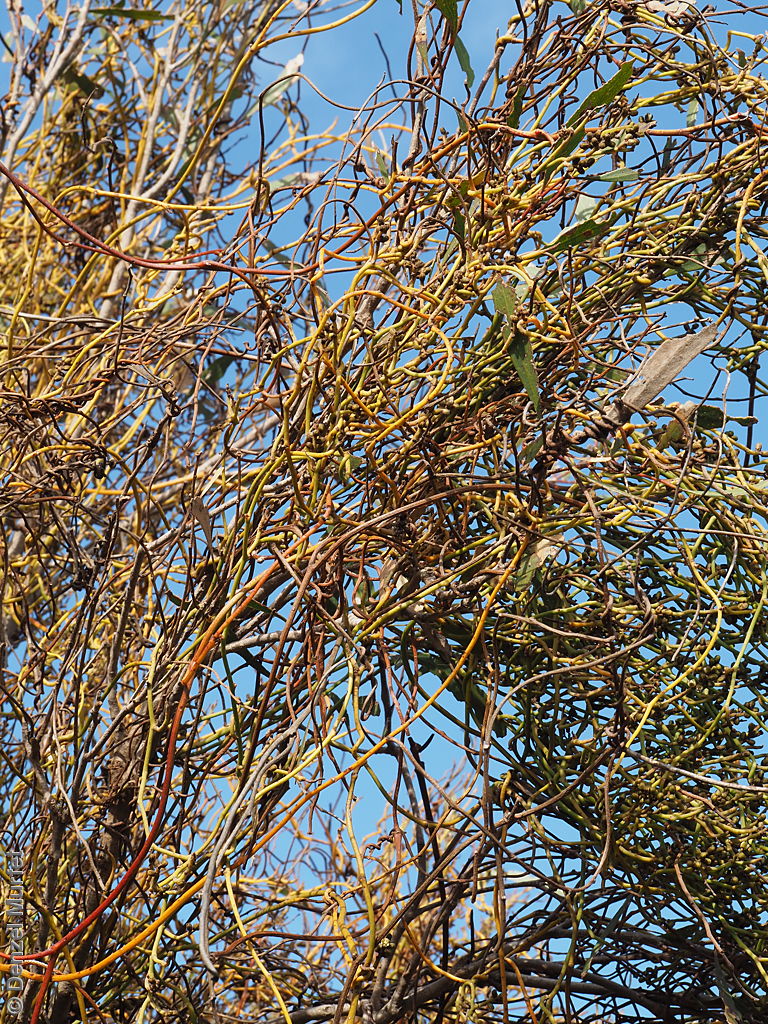
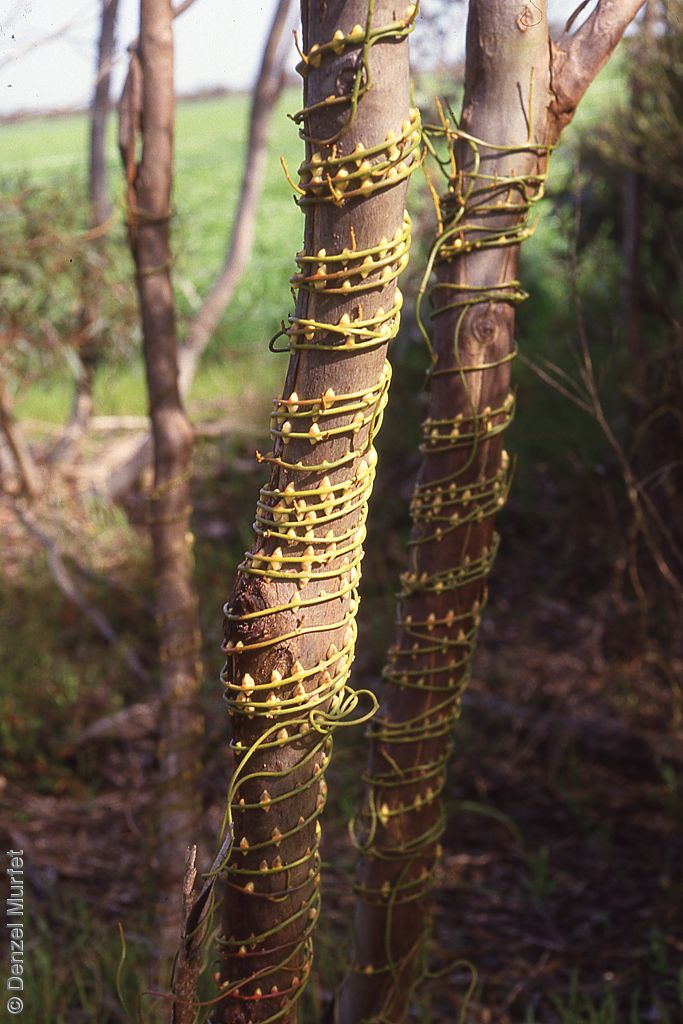
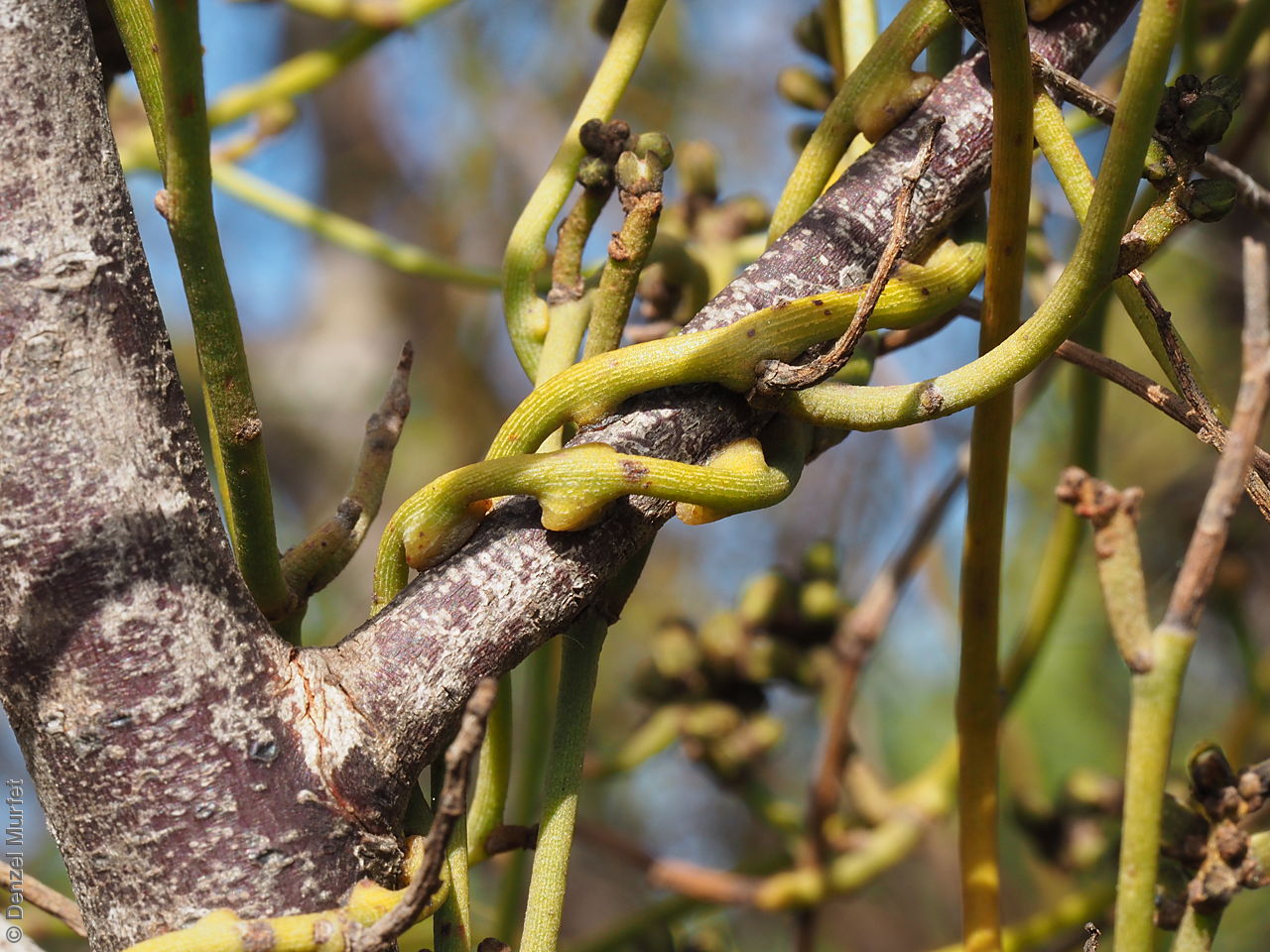
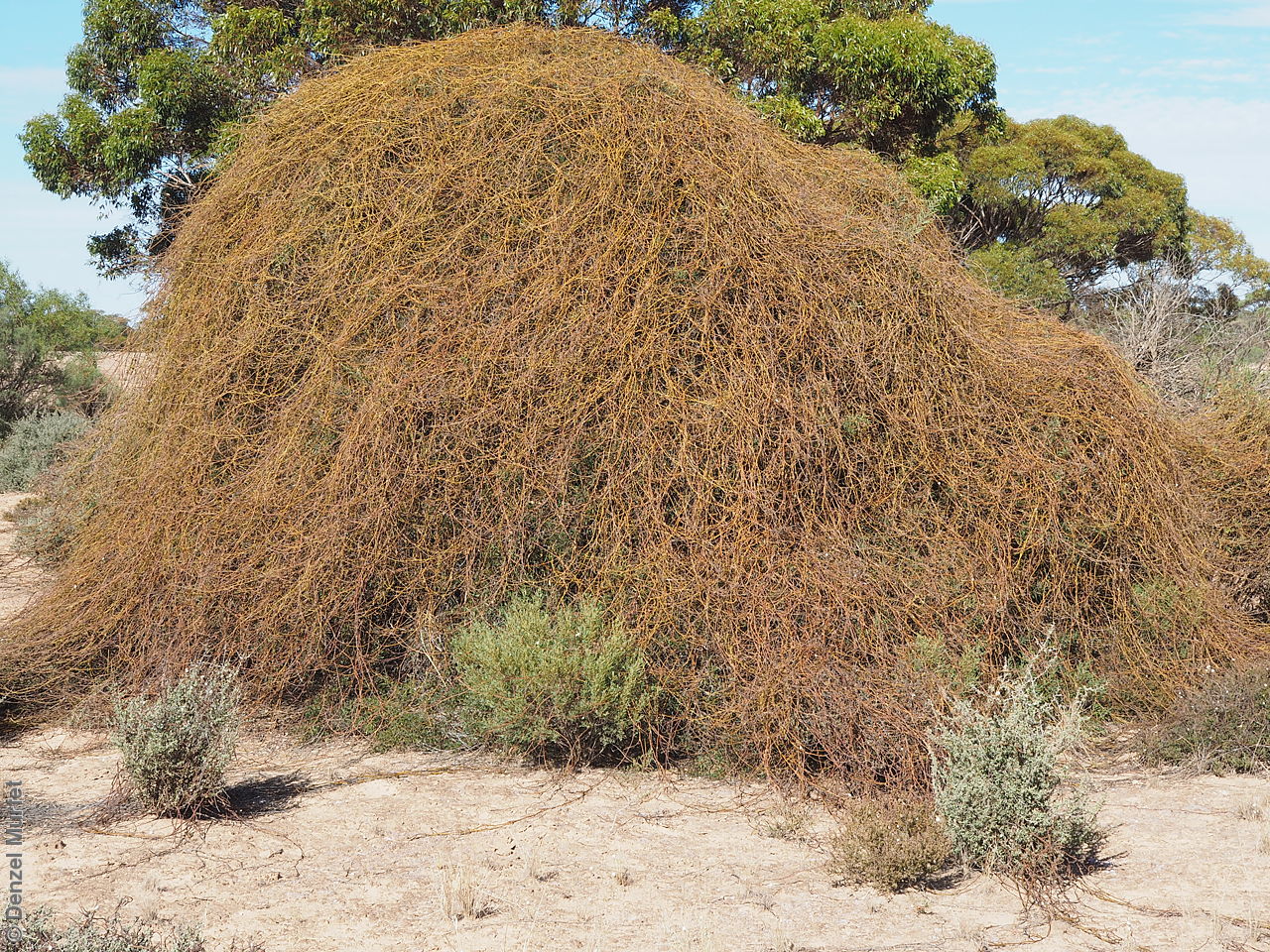
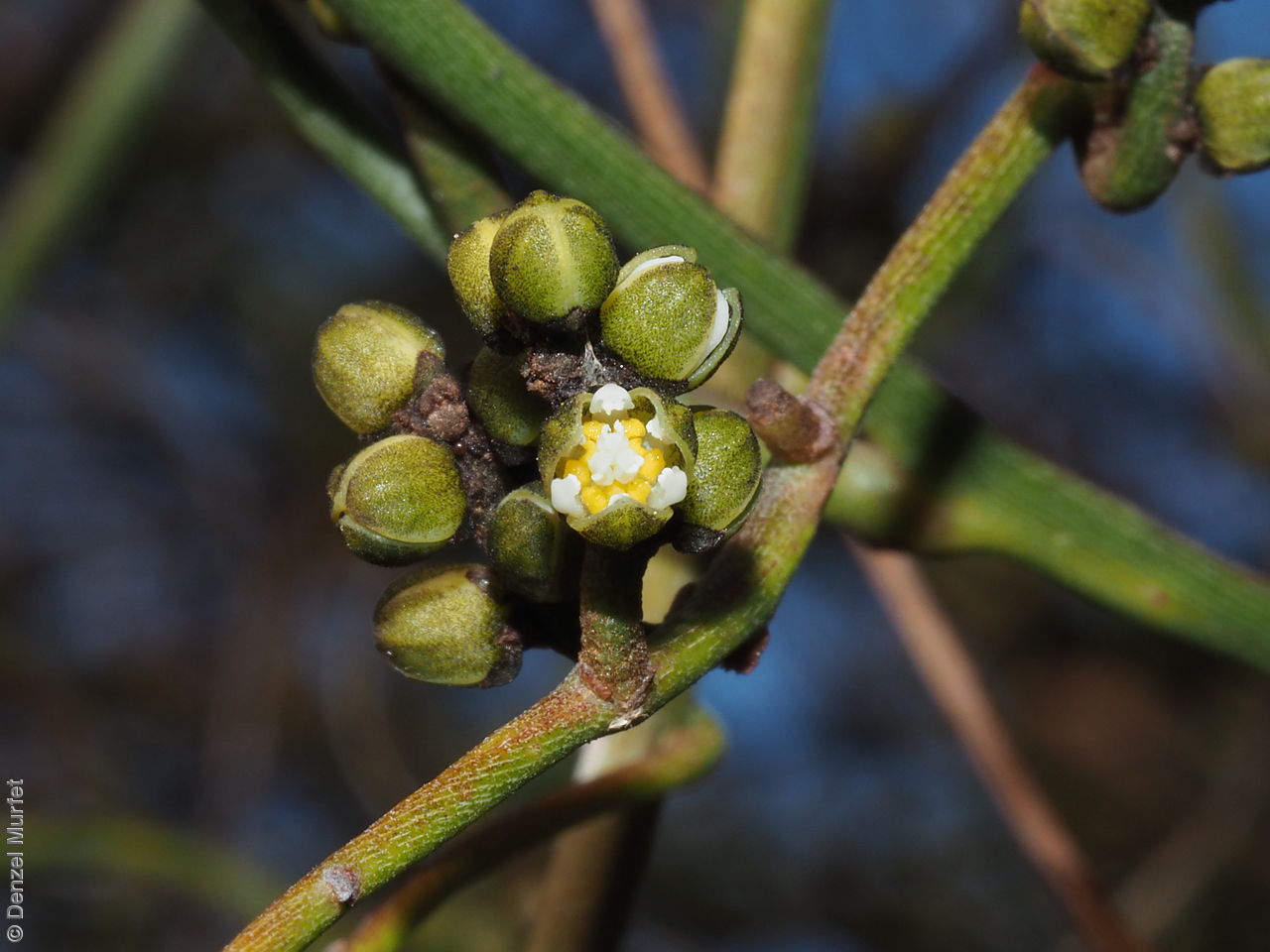
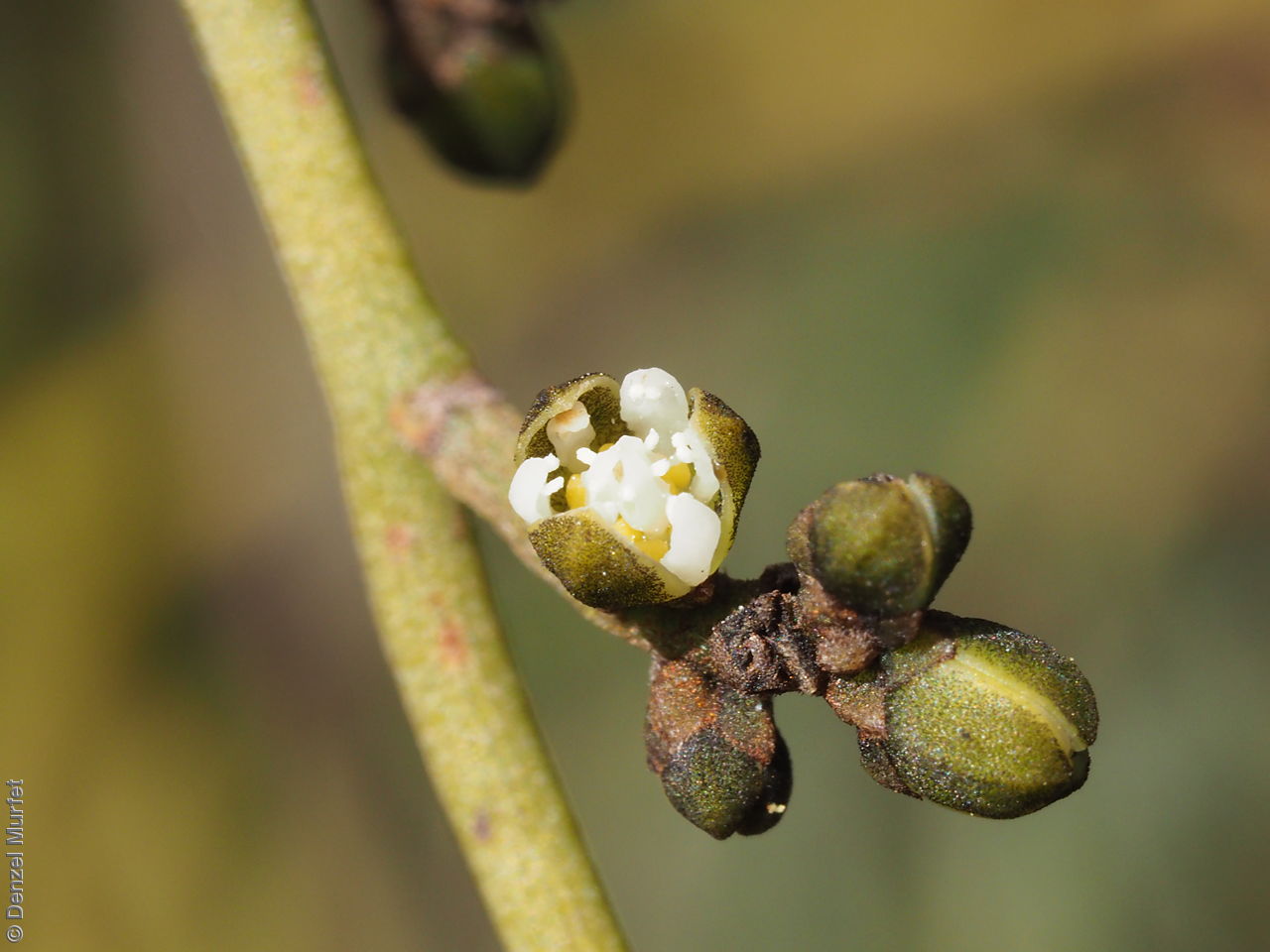
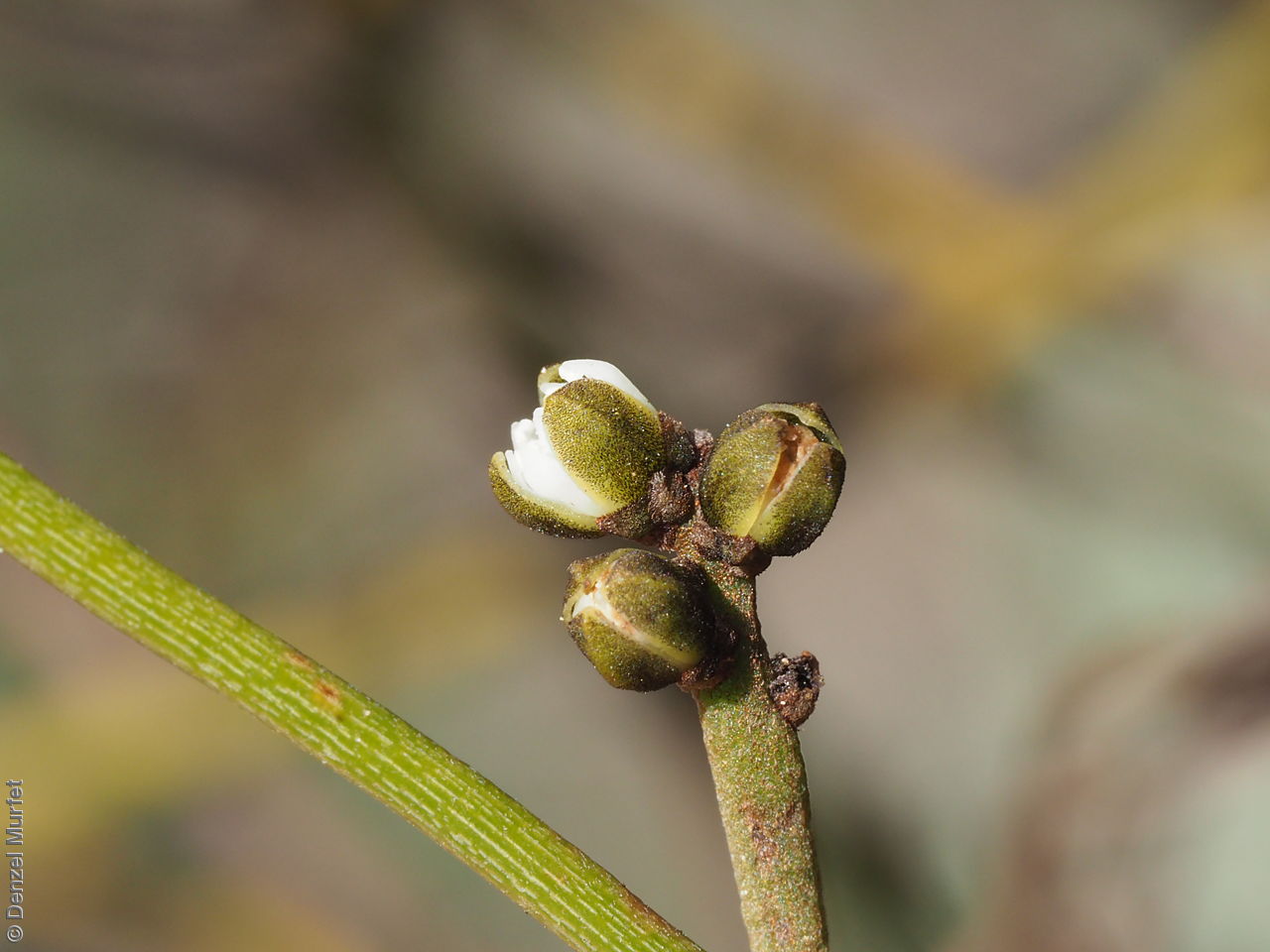
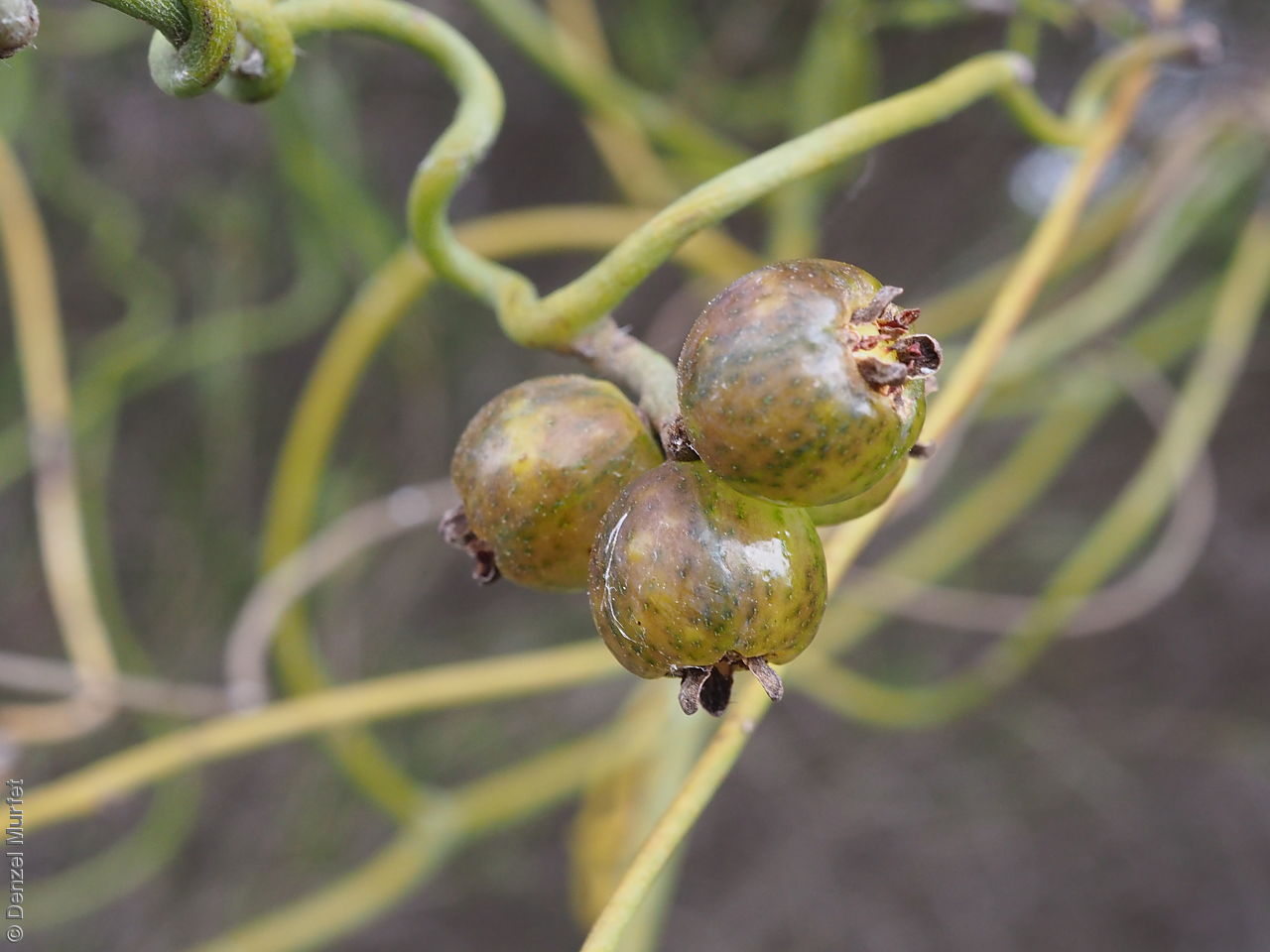
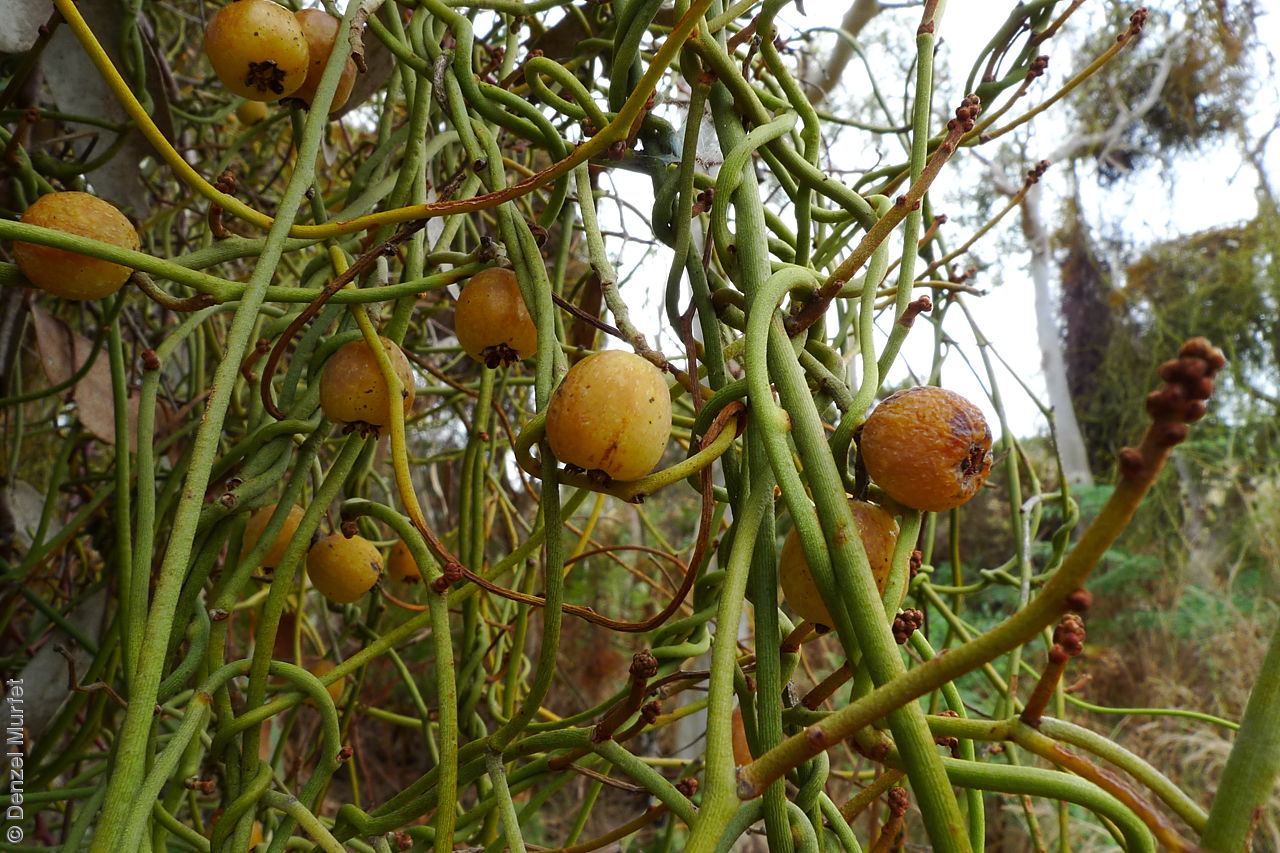

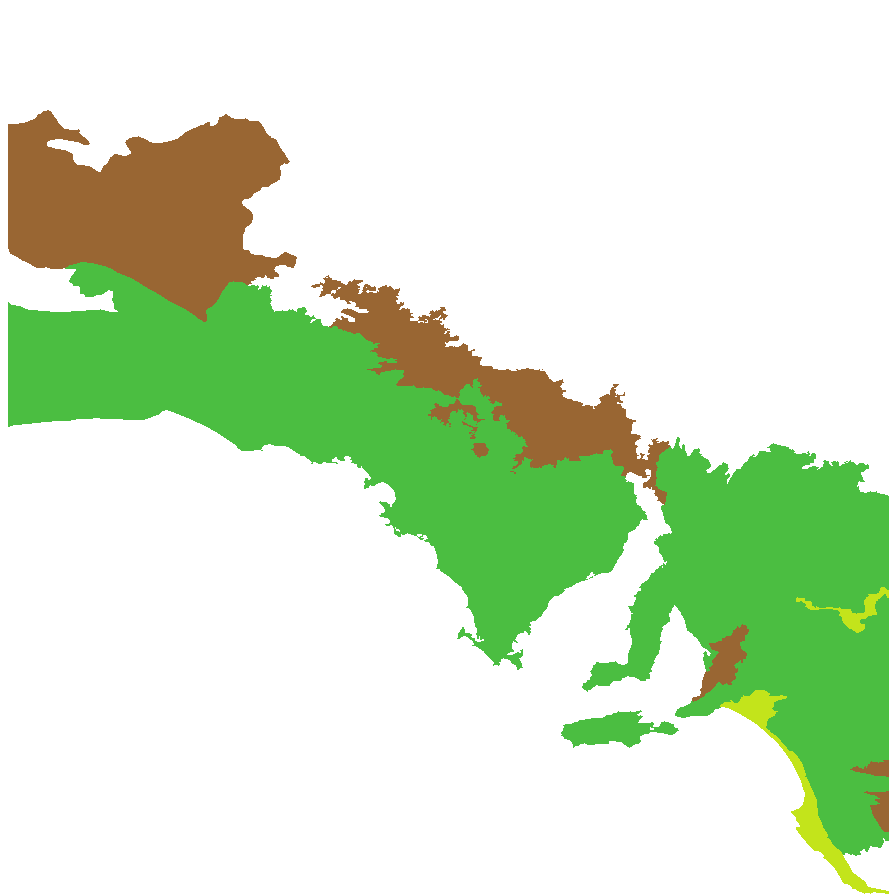
Botanical art
Common names
Coarse Dodder-laurel
Large Dodder-laurel
Etymology
Cassytha from the Greek 'kasytas' or 'kadytas', a name for a parasite to which this genus bears a strong resemblance and thought to have been dodder (genus Cuscuta). Melantha from the Greek 'melas' meaning black and 'anthos' meaning flower, referring to the dark-red to black appearance of its inflorescence and petals covered with short, appressed black hairs.
Distribution and status
Found in southern South Australia growing in woodlands and mallee scrubs. Often extensively and densely draping over and sometimes smothering shrubs and trees. Also found in Western Australia, New South Wales, Victoria and Tasmania. Native. Common in South Australia. Common in the other States.
Herbarium regions: Nullarbor, Gairdner-Torrens, Flinders Ranges, Eyre Peninsula, Northern Lofty, Murray, Yorke Peninsula, Southern Lofty, Kangaroo Island, South Eastern, Green Adelaide
NRM regions: Adelaide and Mount Lofty Ranges, Alinytjara Wilurara, Eyre Peninsula, Kangaroo Island, Northern and Yorke, South Australian Arid Lands, South Australian Murray-Darling Basin, South East
AVH map: SA distribution map (external link)
Plant description
Robust perennial twiner with stems terete, to 4 mm thick, striate; glabrescent, green to reddish-green, younger parts pubescent. Leaves triangular-ovate to 1 mm long and 0.8 mm wide; red-pubescent, drying black. Inflorescence a single cluster with 2-13 white ovoid flowers. Sepals triangular covered with short white, red and black hairs. Petals ovate covered with short, appressed black hairs. Flowering between June and October. Fruits are globular fleshy drupe to 15 mm diameter, glabrescent, light-green to cream-white, drying black. Seeds are black globular woody. Seed embryo type is linear under-developed.
Seed collection and propagation
Collect seeds between August and December. Collecting mature fruits, those that are soft, green, light-green to cream-white or black and have a hard woody seed inside. Place the fruits in a bucket of water and rub with your hands to remove the soft flesh. Remove any seeds that are floating. These will be empty seeds. Drain the water and keep only the hard seeds at the bottom. Place the seeds on paper towel and leave to dry. Store the seeds with a desiccant such as dried silica beads or dry rice, in an air tight container in a cool and dry place.